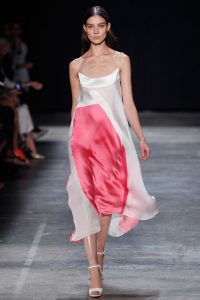Narciso Rodriguez
Narciso Rodriguez
One of the foremost American designers during the last two decades, Narciso Rodriguez plays a singular role in global fashion.
Rodriguez was born in January 27 of 1961, in New Jersey, the son of Narciso, Sr. a longshoreman, and Rawedia Maria, a homemaker. His parents were immigrants from Cuba, and the future designer was the oldest of three children. Rodriguez and his two sisters were raised in Kearny, New Jersey, and in his neighborhood, he was around many women who sewed. By the time he was in elementary school, he liked to sketch. In high school, Rodriguez took art classes and apprenticed with a tailor. While his parents supported his sketching, they were less than encouraging of his interest in sewing and making clothes until he was successful later in life.
After high school, Rodriguez entered Parsons School of Design in New York City. As a student, he was known as much for his cooking as his fashion sense. When he graduated from Parsons, he worked as a freelance designer for several years. In 1985, Rodriguez was hired as an anonymous designer for Anne Klein. During his first year there, he worked under Donna Karan, who later launched her own successful line of women’s wear. After Karan left, Rodriguez worked under Louis Dell’Olio. At Anne Klein, Rodriguez had a variety of experiences, including designing shoes and bags, and going to factories where he learned technical aspects of the business.
Rodriguez left Anne Klein in 1991 when he moved to Calvin Klein as a design assistant. He worked on tailored pieces in Calvin Klein’s women’s collection. While at Calvin Klein, he met Bessette, who was a publicist for the label. The pair became close friends. In 1994, Rodriguez moved on again, this time to Tse, an American-based company that created designer cashmere pieces. At Tse, he designed for both the men’s and women’s collections.
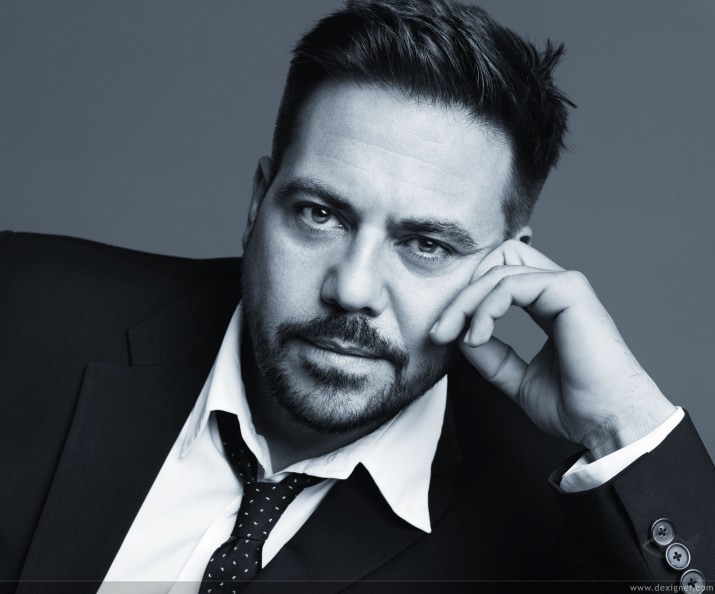
In 1995, Rodriguez left the United States and moved to Paris, France, to work as a designer and consultant for Nino Cerruti, a master couturier. For the Cerruti label, Rodriguez helped design the women’s line. Until this point, Cerruti had been successful with its men’s wear line, but not its women’s wear. Rodriguez helped revitalize Cerruti’s women’s line with his alluring and uncomplicated designs.
While still working for Cerruti, Rodriguez designed several wedding gowns on a freelance basis. For the March of 1996 wedding of Dina Ruiz to acclaimed actor Clint Eastwood, Rodriguez designed her dress. An even bigger splash came with the simple gown he created for the wedding of Bessette and Kennedy later that year. The simple off-white silk dress featured a train and a bias cut. Rodriguez also designed the dress Bessette wore to the rehearsal dinner. Both dresses were his gifts for the bride. After the wedding photos came out for the high profile couple, Rodriguez became a celebrity in his own right. As the knock-offs of the dress sold well, he was soon besieged with offers to start his own label. Rodriguez told Allison Adato of People, "I wasn’t prepared for the impact. [Carolyn] warned me. It was overwhelming."
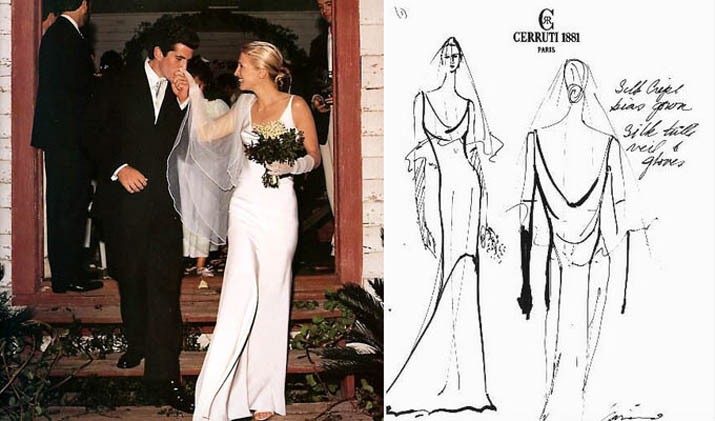
Wedding of Bessette and Kennedy
The success of the gown Rodriguez designed for Bessette affected his status at Nino Cerruti. The fame was too much for the company since Rodriguez was given more attention than the label because of the dress. After a well-received Autumn/Winter 1997 show in March of that year, Rodriguez was forced out of the company when he would not sign a two-year contract. Rodriguez then sorted through a number of job offers.
In 1997, he signed with Aeffe, an Italian manufacturing company that was owned by fashion designer Alberta Ferretti, to manufacture his women’s wear including gowns, shoes, and handbags, as well as casual wear, suits, and dresses. He told Suzanne C. Ryan of the Boston Globe that working on his own was not easy. He said, "It’s a very romantic fantasy when you’re young. But when you see how much it takes, how draining it is—at the end of the day, it’s a business. I was quite fine where I was. I don’t think my personality is such that I need to be the one taking the bow but the one creating the clothes."
Despite the fact that Rodriguez did not seek the spotlight, his first fashion show ever, in Milan, Italy, in October of 1997 for the spring 1998 season, was a success and fun for the designer who was coming into his own. He received good reviews for his women’s clothes which flattered the models with clean, modern, simple lines. Reviewing the show, Tamsin Blanchard of the Independent wrote, "He is not trying to challenge women, stun the world with his intellect or shock us with see-through underwear. All he wants is for women to look at his sequined slips and camisoles and sporty, luxurious separates on the rail, and want to wear them there and then ."
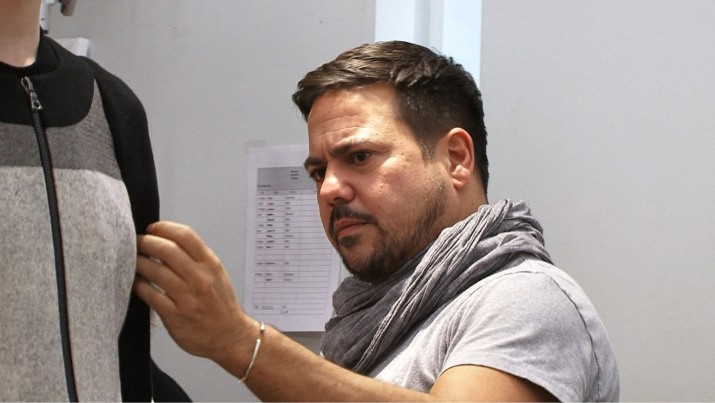
In addition to producing his own line of fashion, Rodriguez also designed for other companies. He designed a fur collection that was licensed to Goldin Feldman. Rodriguez had a contract with LVMH’s (Louis Vuitton Moet Hennessey) Loewe (pronounced Lo-a-vey), a Spain-based luxury leather company. He served as design director for women’s wear, and created evening dresses. His first collection made its debut in March of 1998. All of his work paid off when Rodriguez began being considered for awards. In 1998, he was nominated for the Perry Ellis Award for the best new designer of women’s wear.
Balancing the demands of his label with his work for Loewe proved difficult for Rodriguez. He did shows for his own collection four times a year, often to positive reviews. His clothing was very popular, and was carried by retailers such as Neiman Marcus, Saks Fifth Avenue, and Barneys New York, among others. Many in the fashion world liked Rodriguez’s clothes and supported the man himself, so he did not suffer from the same backstabbing that left other designers feeling undermined by their peers.
Rodriguez had to travel to Madrid for Loewe, but did not get as much support for his work there. The company was once important, but it had faded creatively over time; he hoped to revive it. Rodriguez created two collections a year for the company, though his employment there was often stressful. He told Vanessa Friedman of the Financial Times, "There was a lot of suffering. Trips to factories in the middle of nowhere, living out of a suitcase. I completely lost my focus, and didn’t know why I was doing what I was doing or where I was doing it. But I did learn how much I could endure ."
By the early 2000s, Rodriguez ended his relationship with Loewe and focused on his own line. He also made his full-time home in New York City, and built his own studio that reflected his style as a designer. Rodriguez had his first show in New York City in February of 2001, showing his fall 2001 collection. It featured many tailored pieces. Fitted pieces that flattered women’s figures were also found in his spring 2003 collection which debuted in September of 2002. His sophisticated but wearable clothing became a staple of the New York fashion scene. Rodriguez told Alev Aktar of the Daily News, "I want my clothes to be worn. I want women in the audience at my shows to see really desirable things. That’s my success."
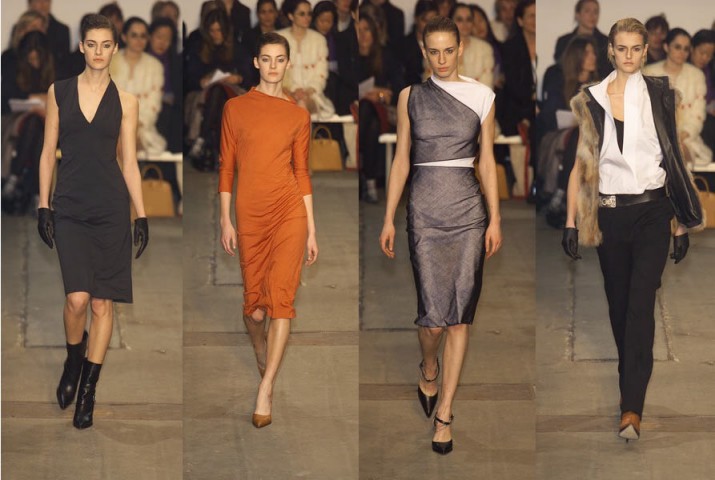
Fall 2001
As Rodriguez conquered New York in the early 2000s, he continued to win awards. He was named best women’s wear designer of the year by the Council of Fashion Designers of America two years running, in 2002 and 2003. Rodriguez was the first designer of the year to win the award twice in a row. His business also prospered financially. In 2002, the sales of his line were about $20 million per year. The number was that high despite the fact that there was no advertising budget nor a chief financial officer. In fact, only 12 people worked at the studio. Rodriguez planned to expand his sales, staff, and his company over time.
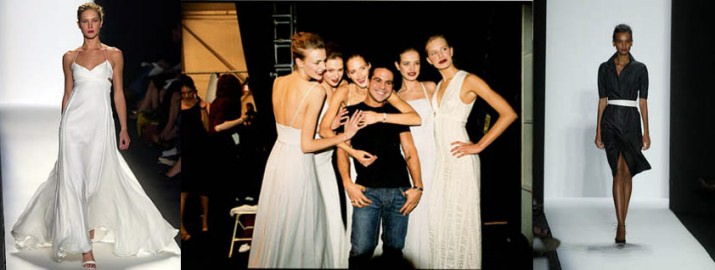
2003
Some critics believed that Rodriguez’s collection continued to improve as he was less distracted and drained by his previous travel demands. He developed a reputation as a leading American designer. By spring of 2003, his gowns, which had already been favored by some Hollywood types, became very fashionable, chosen by actresses such Sarah Jessica Parker and Salma Hayek to be worn on the red carpet. Some of his designs also appeared on the hit HBO show Sex and the City. This led to him creating clothing specifically for some of the actresses, including Parker.
Rodriguez also moved beyond women’s wear to grow his company. He introduced a perfume in 2003 called narciso rodriguez for her, also known as For Her, which was developed with Beaute Prestige International. It was combination of musky, vanilla, amber, vetiver, and orange blossom scents. In addition, Rodriguez opened a store in New York City and planned to open one in Milan, Italy. He also considered doing some advertising.
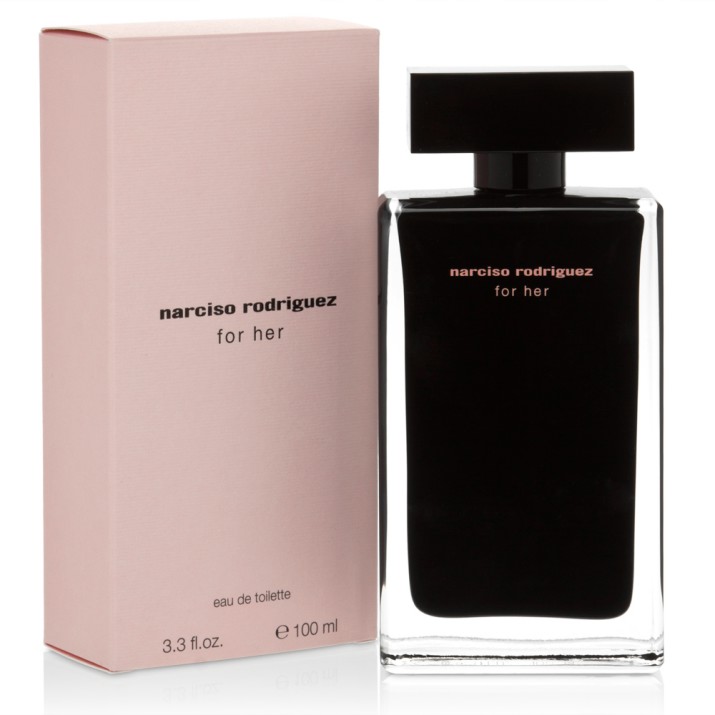
Rodriguez’s shows remained hits for spring 2004 and fall-winter 2004, with fitted dresses and corset details inspired by his trip to Carnival in Rio de Janeiro, Brazil. His fashion shows became the ones that everyone looked forward to during fashion week. The high profile of his shows was heightened by the number of big names in the audience. Critics noted that he stuck with the same basic styles and fabrics with different color palates over the years. This led some to ask why he did not try to innovate more, though others understood that Rodriguez stuck with what worked.

Because of Rodriguez’s success, he was considered for other jobs. When head women’s wear designer Tom Ford left Gucci in 2004, Rodriguez’s name was mentioned as a possible replacement. Although he was not chosen, it was clear that Rodriguez was considered a world-class designer. Rodriguez remained focused on the clothes and the women who wore them instead of his status in the fashion world and unnecessary theatrics. He told Constance C.R. White of the New York Times, "What I’m trying to capture with the look is something more sensual, more feminine. For me, designing is such a personal thing. It’s really emotional—that’s part of my Latin upbringing."
In 2007 Narciso Rodriguez’s men’s fragrance, for him, was launched and received the 2008 Grand Prix du Parfum Award for Best Masculine Fragrance and Best Design. Rodriguez was also honored for Special Achievement in Fashion by ALMA (the American Latino Media Arts Awards) in 2008. In 2009, he was again nominated for the CFDA’s Womenswear Designer of the Year award. essence, Rodriguez’s third fragrance was launched in 2009. In less than a decade, the for her collection, essence and for him collection have become innovative classics and modern icons in the fragrance industry. In 2010, the designer won the title of Mercedes-Benz Presents designer, winning the sponsorship of Mercedes-Benz. The same year, Rodriguez was among the Cultural Leaders of 2010 selected by USA Network and Vanity Fair magazine.
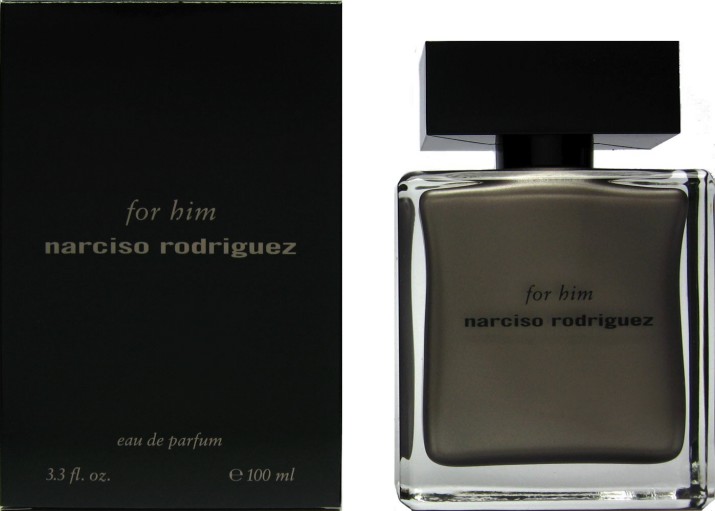
The arts have also figured prominently in Narciso Rodriguez’s life and work. The designer has collaborated in several films and television projects, among them, The Family Stone in 2005, The Fountain in 2006, Bee Movie in 2007, the 2008 remake of the The Women, as well as Sex and the City.

 Rodriguez has maintained longstanding personal relationships with many actresses, including Sarah Jessica Parker, Claire Danes, Julianna Margulies, and Rachel Weisz. Rodriguez established a relationship with internationally celebrated choreographer Christopher Wheeldon, founder/director of Morphoses; he designed costumes for Morphoses’ American and British premieres in 2008. The designer’s work has also been featured in several museum exhibitions including MoCA’s “Skin and Bones” in Los Angeles and Cooper Hewitt’s Design Triennial Exhibition, both in 2006.


In 2008, Narciso Rodriguez, a book devoted to the designer and his process, was published by Rizzoli to critical acclaim.
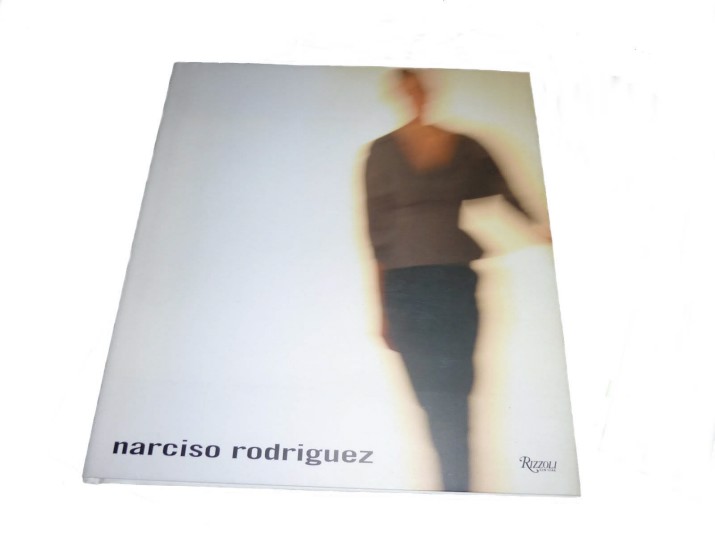
A designer who has redefined American style in the last two decades, Narciso Rodriguez plays a singular role in the modern global fashion world and has been the recipient of many honors. In 2005, Time Magazine honored Rodriguez by naming him one of the “25 Most Influential Hispanics in America” while two years later, he received the Fashion Icon Award from Pratt Institute. In the fall of 2008, the book Narciso Rodriguez was published by Rizzoli International to much critical acclaim.

 In 2009, Rodriguez, a three-time CFDA award-winner, was been nominated for a fourth time as Womenswear Designer of the Year. Rodriguez has been honored with the USA Network 2010 Character Approved award. Today he continues to evolve and to expand his business.

Text Courtesy: NotableBiographies.com, Wikipedia.org, MBFashionWeek.com
Below Narciso Rodriguez Collection




